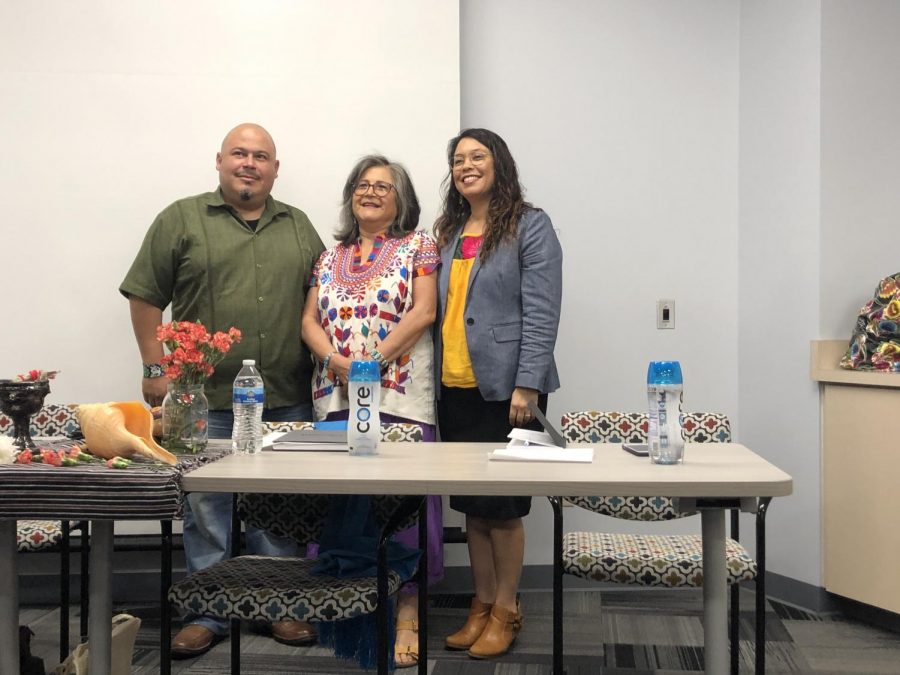Panelists Maria Figueroa, Bea Zamora, and Roberto D. Hernandez shared their experience with the beautiful Mexican tradition of Danza Azteca and its importance in the modern day at the Mesa college campus on May 2. Not only do all the panelists share their love for Danza, but all came to the Danza as a spiritual calling and awakening to the curiosity of their own background and culture.
For San Diego, being a city across the Mexican border means that of those who cross in hope of a better life bring their traditions with them in order to feel closer to home. According to Zamora, although this tradition is known as Danza Azteca, its actual name is Danza Chichimeca. This tradition dates back to the 1500s, and was created by the Otomi tribes in Mexico after losing a battle against the Spaniards. The creation of this dance was to preserve tradition and culture, while it was beginning to be infused with Catholic elements.
Danza is very much much like an ofrenda, or an offering, in the sense that it can be viewed as sacred and spiritual. Zamora further described Danza as a “ghost dance.” She explained, “when we dance, we are dancing with our ancestors and with our future ancestors.” Coming from various struggling backgrounds, the speakers each shared how they connected to Danza and how it strengthened their cultural identity.
Hernandez grew up in San Ysidro, close to the border that divides Mexico and the United States, shaping him by various traumatic experiences. This included a childhood memory of July 19, 1984, when a shooting occurred down the street that killed 21 people, including two children, one of them being Hernandez’s childhood friend. Being by the border, Hernandez witnessed California Border Patrol chasing people who looked like him. He knew that the shooting and the harassment from Border Patrol weren’t random– him and his people were racially targeted. This left him wondering why this would happen. One of the first protests that Hernandez attended was to remember the lives of indigenous people taken away by Columbus. Afterward, he was left wondering about the oppression of his people. During his high school years, he came across Danza for the first time where he met Zamora. Although he didn’t join Danza immediately, he felt its calling. After moving back to San Diego, he was able to find a Danza group to call home.
Very much like Hernandez, Zamora and Figueroa grew up in very similar situations. Although, their calling to Danza was more of an ancestral calling. Zamora grew up having pride in her background, but the knowledge about the details about her culture were a complete mystery to her. It wasn’t until her time in college that she encountered Danza Azteca. There was a strong lack of cultural representation while she was growing up. She felt drawn to Danza Azteca upon seeing them. Chills ran up her spine and tears filled her eyes. Similar to Hernandez, she also started to become more involved in Danza Azteca after returning to San Diego to pursue her master’s degree. After 40 years of practice, she has used her background during the moments she needed strength when facing racism.


